
Previously: 40 Years in Beer, Part Thirty Eight: Christmas in Košice, 1991.
My teaching assignment had always been open-ended, and I might have worked longer. However, Education for Democracy (EFD) (my sponsor) indicated that other volunteers were waiting to restock the Czechoslovak instructional larder. When I returned to Košice for a visit in summer 1993, the program was still in place.
In addition, and somewhat uniquely given my personal history of ineptitude with the opposite sex, I had an actual girlfriend waiting at home. Consequently, I came to a decision to return stateside in February of 1992, presumably having gotten “it” (whatever “that” was) out of my system (1).
EFD’s first replacement teacher was due to report in late January, which provided the opportunity to make a special pilgrimage to the Netherlands, recounted here in a travelogue I wrote later in 1992 for publication at Walking the Dog, the official newsletter of the FOSSILS homebrewing and beer appreciation club.
Bear in mind the target audience while reading. The text has been edited and a few changes made, but the essay is substantially the same as the original.
My hosts in the Netherlands were Bram and Rie, who lived in Spijkenisse, a suburb of Rotterdam. I first made their acquaintance when they visited their daughter Nelly and son-in-law Paul, who were next door neighbors of my parents. They’d invited me to Spijkenisse, although exactly how this might be facilitated in the context of my itinerary remained a mystery until late autumn, when I started seeing posters around Košice for a new private transportation company’s budget bus service from Brno to Rotterdam.
A thought bubble was promptly generated. Start-ups of this nature were common during the early post-communist period as budding entrepreneurs sought to fill gaps in goods and services. They often were short-lived, and sometimes shady, but some of my students checked into it and pronounced the offer legitimate.
It transpired that a travel agency in Košice was acting as ticket agent, and following the requisite letters to and from Spijkenisse, my bus fare was paid, and a couchette on the night train to Brno booked. In the end, the entire journey proceeded without a hitch.
Bram and Rie have long since passed away; they both led full, long lives and guiding their family through the postwar recovery. Their generosity to me in 1992 was humbling, and I’ll be thankful for it until the day that I, too, depart the scene.
Concurrently, the long trip to Spijkenisse and back in 1992 enabled precisely the sort of beer-bound obsessiveness that I have come often to denounce these many decades later.
Specifically, the notion that one’s beer credentials depend on lengthy lists, whether reviewed or merely compiled, now strikes me as the very apex of irrelevance, and yet there I was during those first few trips to Europe, recording beer names longhand in a journal, then typing them once I had returned home.
To the charge of hypocrisy sure to be leveled against me in some quarters, I acknowledge there is no statute of limitations, and nolo contendere is my unflinching plea.
You’ll no doubt notice that I didn’t really know what I was talking about when it came to describing these many beers, and whenever I accidentally came close to the mark, the vocabulary was lifted directly from one of Michael “The Beer Hunter” Jackson’s books, and not always properly utilized.
Overall, as with the contemporary beer trends I take such delight in satirizing, my standpoint in ’91-’92 in retrospective terms, is probably best described using these words from Corinthians (and trust me, I quote scripture roughly once per jubilee):
When I was a child, I spoke as a child, I understood as a child, I thought as a child; but when I became a man, I put away childish things.
We can’t avoid navigating childhood, right? I only hope that it drove me toward greater understanding. You can judge for yourself.

BEER LIST ’91‑’92: THE FINAL DAYS
As one who has been known to collect and sniff old beer caps in search of long‑lost moments in time, common sense can take a beating when I’m hunting beer on the road. A prime example of this was my decision in early January, 1992 to purchase a bus ticket from Brno, a city in central Czechoslovakia, to Rotterdam, Netherlands, where the elderly parents of my parents’ next door neighbor had agreed to house me for a week and enjoy wintertime Holland.
The trip itself would be tiring, though ridiculously inexpensive. From my temporary residence in Košice, an overnight train would take me to Brno, where the bus terminal was located. I would have a half‑day for sightseeing there before boarding the bus at 4 p.m. and setting off for Prague. The bus was scheduled to arrive in Rotterdam at about 7:00 the following morning. The round-trip fare was $65; I had been earning $100 a month, an average salary for a teacher in Slovakia, and dug into the backup traveler’s checks.
Naturally, l was eager to visit Bram and his wife Rie, who I’d met the previous summer when they came to my hometown of Georgetown, Indiana to spend time with their daughter and her husband. In addition, after several months in easternmost Czechoslovakia, and having already resolved to return to home in February, l was ready for a comparatively exotic taste of western European consumer society.
Looming over all of it was my gathering fascination with beer—and not merely beer, but as many different brands and styles of beer as possible. As during previous trips to Europe, l had embarked on the ’91‑’92 journey with the express purpose of trying a different beer for each day away from America (2).
On previous trips, this had been easy; many nations were visited, and each boasted numerous beers. However, the ’91‑’92 journey proved more problematic.
After rolling up a huge cushion of 110 different beers over the first 45 days, my arrival in Košice placed me squarely behind the eight ball, as my domicile was fixed, and only a few beers were readily available. Imports? Virtually unheard of. Apart from weekend trips to Plzeň and Budapest, ground was steadily lost.
On January 20, the statistics were as follows:
- Date: 20 January
- Day No.: 186
- Beer No.: 158
- Plus/Minus: ‑28
The next day I found a German‑language label (though Czech‑brewed) Ur‑Bruxer in the local market. On the 22nd, the evening of departure for Brno, nothing new could be sourced. I left Košice with a 29‑beer deficit and roughly two weeks remaining in Europe, but at least I was well-conditioned, having begun a training regimen several weeks earlier that pushed my daily half‑liter intake from two or three to a minimum of five. My liver had been fully briefed, and it was time for the show.
- Date: 21 January
- Day No.: 187
- Beer No.: 159
- Plus/Minus: ‑28
—
- Date: 22 January
- Day No.: 188
- Beer No.: 159
- Plus/Minus: -29
23 January, Thursday
An uneventful train ride from Košice ended at 7:10 a.m. on a cold, gray Thursday in Brno, capital of Moravia (Czechoslovakia’s midsection; Bohemia was situated to the west and Slovakia to the east).
Fervent remodeling and renovation were underway in the old central district. A well‑stocked supermarket yielded ham salad, bread, yogurt and Pepsi, then after a few hours of wandering I arrived at the Stopkova Pivnice (“pivnice” is a pub, or tavern) to kill some time (and beers) before the bus left at four.
In addition to Pilsner Urquell, which had been previously sampled (painstakingly), the Stopkova featured Domažlický Purkmistr tmavý, a dark lager of nearly Bavarian quality. The tavern itself was recently remodeled—the restrooms were far cleaner than those of the average Czech beer house—but it retained the characteristic high ceilings and wooden furnishings, and the facade boasted a beautiful mural that detailed medieval drinking scenes.
In route to the bus station, I picked up two half‑liter bottles of beer for the trip: Staro Brno Tradicni svétlé pivo 10%, “Old Brno Traditional Light (colored) Beer,” and Holešovická desítka 10%, the latter a product of the Pražan brewery in Prague. The 10% refers directly to the gravity and not necessarily to the alcohol content, which at approximately 3.2% by volume is lower than the 4% alcohol content of standard 12% Czech brews. Both were refreshing, and neither were watery like typical American light beers.
I found the bus terminal, although there were a few anxious moments when the exact departure point eluded me. The bus was without WC (water closet), but otherwise well‑suited for long‑distance travel, with a beer-stocked fridge and a television/VCR mounted in front. No one had boarded in the original starting point of Olin, so only five passengers began the journey from Brno.
We left promptly at four. I immediately drank the Staro Brno and declined a fellow traveler’s offer of rum (3). His girlfriend spoke to me briefly in English; together they studied an English textbook until dark, occasionally asking me for help or interpretations. The countryside was beautiful and the day sunny and pleasant for January.
In Prague the bus filled up with people, including two obnoxious Dutch youths who promptly became the bane of my existence. Meanwhile, pulling away from Prague, we were treated to an old French movie dubbed into Czech, followed by four short performances by British comic Richard Atkinson. Soon we arrived at the German border, where a troupe of border guards made a cursory check of the vehicle and our passports.
I went for a WC stop, which would be repeated several times that night as we took brief respites in German autobahn truck stops. Speeding through Germany, the silence was broken only by the gutteral voices of the Dutch youths in the seat behind me. Later, well after midnight, I awoke after a short nap to discern the Netherlands through the fog.
- Date: 23 January
- Day No.: 189
- Beer No.: 162
- Plus/Minus: ‑27
24 January, Friday
A short nap, yes, but in the main it is impossible for people my height (6’ 4”) to sleep well on a bus, and combined with the incessant babbling to my rear, accumulated fatigue (as well as grime) rendered me cranky upon our arrival in Rotterdam, almost exactly on time despite thick fog and heavy traffic.
Stepping off the bus, I cased the locale, took a deep breath and turned around to find Bram, my host, walking toward me. We pumped hands vigorously, stowed my pack in the trunk of his car, and set off for Spijkenisse, a suburb of Rotterdam.
A dazed, non‑chronological summary of Friday’s events includes visits to the bank for guilders and to the store for beer and snacks, a drive to the town of Brielle for sightseeing, and an evening of television that led off with Dutch versions of the “Price Is Right” and “Wheel of Fortune” gameshows and finished with an Australian adventure show about airborne doctors in the bush.
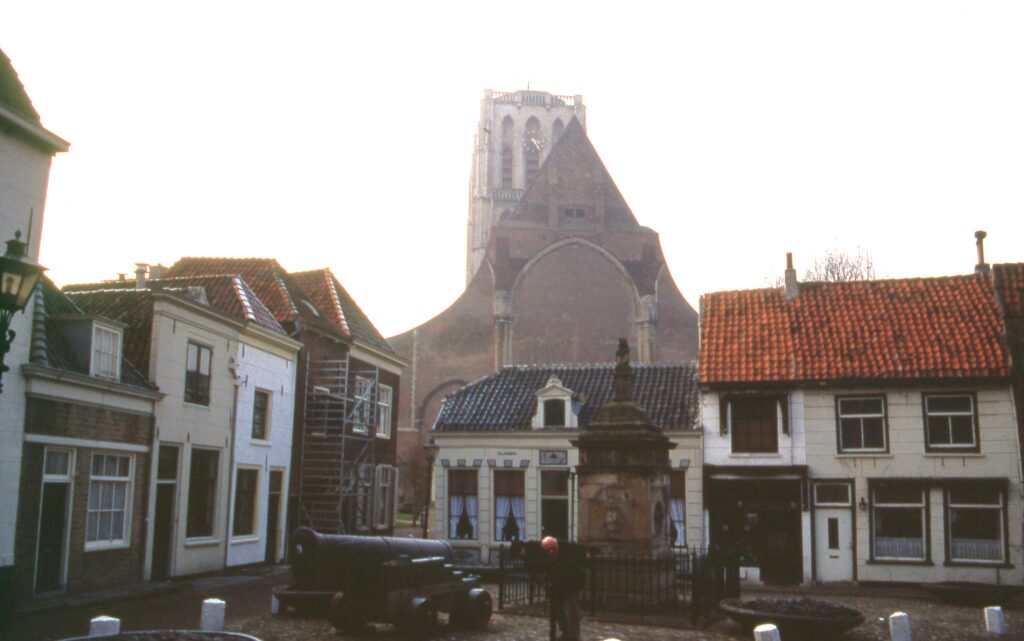
However, the first day was dominated by Bram, his command of English self‑taught, rough, yet effective, and imbued with an indomitable spirit. Bram offered a running commentary on sights and people, much of it punctuated with his favorite English word, “bullshit.” In Brielle he posed in the antique public stocks and abused the passers‑by for being too old (he was 75).
Bram was a skilled driver, befitting one who drove an Esso tanker truck for decades. He cursed at the television, danced the Charleston in the living room during a figure‑skating telecast, and made faces at the ladies in line at the grocery, where he bought me several beers and provided a scathing verdict on his American son‑in‑law’s preference for low-calories beers.
On Friday evening after devouring portion of Rie’s wonderful roast, I sampled three Dutch beers as we watched television. Hertog Jan Pilsener was my inaugural Dutch lager, a clean and flavorful pils hopped with Saaz. Hertog Jan Dubbel, a commercially‑brewed “abbey” ale, was dark and unfiltered, as was La Trappe Trappistenbier Dubbel, from the only Trappist brewery in the Netherlands.
- Date: 24 January
- Day No.: 190
- Beer No.: 165
- Plus/Minus: ‑25
25 January, Saturday
Eleven hours of sleep left me ravenous, but my hunger was quelled by a hearty breakfast of bread, butter, honey, jam and black coffee thick enough to suspend a spoon. Bram and I drove to foggy Rotterdam for several hours of window shopping and wandering through the many Saturday street markets. Modern Rotterdam is billed as the world’s largest port, and commerce was raging in every direction. It was an incredible contrast with the very laid‑back Slovakia.

Driving home, another chorus of “bullshit” was followed by Bram’s pointing toward a row of sailor’s bars and restaurants. The most prominent among them was the object of his delight: The Cafe Bullshit.
(As an interjection, if I seem to give all credit to Bram, it’s probably because his command of English was better than Rie’s, and I spoke no Dutch.)
The remainder of the afternoon was spent in Spijkenisse, a clean, well-landscaped planned suburb. Having achieved some measure of orientation amidst the fog, bridges, canals and skaters, I retreated to the living room for another round of sampling.

The evening’s lineup included the remnants from the previous day’s larder: Belle‑Vue gueuze lambic (Belgium), Hoegaarden Grand Cru (Belgium), Amstel Bier and Stender Premium Alcohol‑vrij. Stender bore the characteristic brewhouse aroma of non‑alcoholic products. The flavor was surprisingly full and unsurprisingly fleeting. Amstel is Heineken’s venerable “sister” beer; perhaps a bit edgier, although it may have been my memories of drinking the Greek‑brewed version with salami and goat cheese in Pythion, Greece in 1985 that shaped my opinion of another solid Dutch lager.
The Belgian beers provided brief testimony as to the diversity of the neighboring country’s beers. Gueuze is a blend of lambics, Belgium’s famously eccentric and spontaneously‑fermented wheat beers. BelleVue’s lambics aren’t considered the best, but they are a sparkling introduction to one of the beer world’s most individualistic styles. Hoegaarden Grand Cru is the all‑barley version of the acclaimed Belgian “White” beer, so named because of its yeasty cloudiness. Coriander and curacao are used to spice the slightly sour beer, which has an alcohol content of 7% by weight. After a day spent out in the foggy chill, it was a curative libation.
- Date: 25 January
- Day No.: 191
- Beer No.: 169
- Plus/Minus: ‑22

26 January, Sunday
The stores were closed, so I walked to a nearby pub. Heineken was on draft, and the few bottled beers available could be purchased more cheaply elsewhere. I drank from the tap. Earlier in the day we’d taken a drive through the countryside to Scheveningen, my first beach resort since “T*t Beach” in Copenhagen (4). Freezing temperatures precluded a repeat of the Danish scenery, but Bram facilitated my introduction to something arguably better: Nieuwe Haring and onion. Returning from the bar, I found Bram glued to the tube for soccer scores. As for his assessment of America’s Stupor Bowl: “Two meters forward, three meters back. Bullshit!”
27 January, Monday
It was time to hit the beer trail as hard as possible, so of course I overslept, lazed through three fine coffees and then finally took the subway to Rotterdam for several hours of aimless wandering. Back in the central shopping area in Spijkenisse, an oasis was revealed: Gall & Gall, a chain liquor store with a wide selection of beers. The purely scientific sampling would begin in earnest! Bram, ever more amused at my preoccupation with beer, shared family photos with me as I enjoyed a Dommelsch Pils (Dutch; average quality), Amber Grolsch (vague shades of a Vienna‑style lager, crisp and light), Gulpener X‑pert (pilsener‑style of excellent color and Tettnang hop bite), Gulpener Dort (denoting a premium beer, and not so much a classic Dortmunder), and finally Stoom Bier (literally steam beer, from the Arcense Stoombierbrouwerij, golden colored but different ‑ wheat? top‑fermentation?)
- Date: 26 January
- Day No.: 192
- Beer No.: 170
- Plus/Minus: -22
—
- Date: 27 January
- Day No.: 193
- Beer No.: 175
- Plus/Minus: ‑18
28 January, Tuesday
I joined Bram and Rie for a drive to Gouda for a look at the cheese market and history museum, then to Kinderdijk, where eighteen old‑fashioned Dutch windmills crowded close together in yet another heavy fog. A pleasant evening followed, although Bram became agitated during a television news segment that detailed the experiences of a Holocaust survivor.

During World War II the occupying Nazis arrived at the front door one day and forced Bram at the point of multiple guns to become a laborer in Germany for the war’s duration (roughly three years). I believe Rie was pregnant at the time.
Little love is lost when it comes to Bram’s erstwhile “employers”; conversely, among his American liberators was an officer who needed a driver, and Bram was one of the few laborers who knew how. He credits this officer’s postwar written recommendation for landing the Esso job, and hence, his entire career. Let’s just say that Bram’s reactions to Germans and Americans are worlds apart, and understandably so.
Beer sampling proceeded: Jaeger Bier‑ Pilsener; Brand UP (Urtyp Pilsener); Duvel; Brand Imperator Bier; and Oud Limburgs (Arcense). All except Duvel were Dutch. The sole Belgian representative was one of my favorite beers on the entire trip. As many writers have noted, the beer’s appearance is that of a pilsener, and this is deceptive, because the “Devil” is a top‑fermented, all‑malt, full-bodied, high‑alcohol wonder that lends itself to hyphenated descriptions. Of the others, Imperator was a tasty, unchallenging single bock and the Oud Limburgs an alt bier. Brand UP’s original gravity of 1050 and its 37 units of bitterness made for a hoppy, satisfying premium pilsener.
- Date: 28 January
- Day No.: 194
- Beer No.: 180
- Plus/Minus: -14
29 January, Wednesday
A 200‑km odyssey by car took us to the engineering marvel known as the Delta Project, built in response to devastating floods in 1953, and comprising three big coastal dams with moving barriers that can be lowered to check the sea in stormy times.
After an hour browsing through the museum, Bram embarked upon a leisurely (for him) drive past farms and quaint villages, eventually leading to the town of Middelburg (5), equipped with a stereotypically European central square, medieval town hall and the best stocked liquor store I’d seen in a while (cover photo). 21 guilders later, we were roaring back to Spijkenisse.

In sports, we talk about “Big Mo.” Following another wonderful meal of meat, potatoes and greens (as Ignatius J. Reilly might say, they had my valve functioning gratifyingly), I dove into my stockpile. In short order, six were gone. Arcener Stout was pleasingly dense with dark chocolate overtones and a hint of smoke, but the aftertaste was problematic. Brand Sylvester Bier, a New Year’s top‑fermented specialty, had a seductive amber color, a huge frothy head and winter warmer strength (1074 original gravity, 6.4% alcohol by weight).
Next up: Grolsch Bok Bier, with the familiar clean palate and unchallenging bock characteristics. Another bock, Dommelsch Bokbier, had a pleasing coffeeish aftertaste. Arcener Winter Bier might have been the Dutch cousin of Carlsberg’s Elephant, such was the broad, alcoholic maltiness (between 7% & 8%). Rounding out the evening’s adventure was a Heineken Oud Bruin Donker Bier, or Old Brown, which like all Dutch beers of this style is a low‑alcohol (2%) dark beer, refreshing like the Stender but without the burnished mouth feel of good dark lagers of normal strength.
- Date: 29 January
- Day No.: 195
- Beer No.: 186
- Plus/Minus: -9
30 January, Thursday
As retirees on a fixed income, my hosts made precise calculations of their energy costs. The heat was kept on only in the living room, the kitchen (when in use) and in the bedrooms (at night). Showers were lukewarm at best, perfectly sufficient to freshen up, yet encouraging brevity of use. Why waste electricity? Waking up chilled didn’t matter much. The coffee was hot, and my evening beers were cool. Roast and potatoes comprised the daily evening meal, sufficient to comprise lunch and dinner. Bram’s and Rie’s generosity was epochal, and I’ll always be grateful.
Other than a walk and some tepid souvenir shopping, official activities had come to an end. Bram was tired, and I certainly didn’t want to tax him. By this point he had become an opinionated spectator of my samplings (he took occasional nips) but his skepticism about “Belgian Night” in the living room was palpable. As a confirmed golden lager/pils drinker, Bram saw little merit in the bewildering brewing scene in Belgium. Conversely, my interest in all things Belgian was growing.
#187 was Speciale Palm, an ale with a medium, fruity body and a rolling finish. I didn’t think of it as highest quality, though it was an appropriate way to prepare the palate. Next up were back‑to‑back Westmalle Trappistenbiers, Dubbel and Tripel, brewed in an abbey near Antwerp. The Dubbel was brassy, malty and dry, the Tripel a rich, deep gold. Pilsener malts are used, but candy sugar is added according to abbey brewing tradition. There are three hopping stages, which might explain my note “very complex hop flavor.”
The Dentergems Wit was pale and fruity. A St. Louis Kriek Lambic offered the opportunity to taste test a cherry lambic; though the cherry flavor came through strongly at first, the finish was less vivid. #192 brought me to Hoegaarden. A basic Witbier, pale and cloudy, with fruitiness and spice, and in my view better than the Dentergems. All in all, my bottled foray into Belgium was marvelous ‑‑ especially since none of the bottles cost more than $1.25.
- Date: 30 January
- Day No.: 196
- Beer No.: 192
- Plus/Minus: -4
31 January, Friday
First I aimed to cash in my numerous returnable bottles and use the combined proceeds to buy canned beer for the journey back to Brno. Next, the seven remaining bottles in my stash would be consumed on Friday night, putting me ahead of the game at last.
I began with the classic Guinness Special Export Stout, with full roasted malt flavor and ample dryness. I followed it with a sweetly bitter Oer Bock, yet another Arcense beer and perhaps the best balanced of the lot. Arcense Altforster Alt was dry and tightly drawn. The earthy aroma reminded me of the long‑forgotten Dempsey’s Irish Ale (6). #196 took me back to Belgium ‑‑ specifically, to Antwerp for that city’s De Koninck, a copper‑colored ale with amber/red color, fruity characteristics and a pleasant after bite.
At 8:55 p.m. I reached even ground. A Dutch medical soap opera’s closing credits were rolling when I removed the cap from a commercially‑brewed Sixtus Prior 8, a dark, nutty Abbey. It was followed by a Brand Dubbelbock Bier, good but nowhere near Paulaner Salvator, the standard of Doppelbock excellence. The evening ended with Lindeboom Pilsener, ordinary and yet distinctive for a pleasing, dry, happy finish. This session pushed me over the top. It was time to score a few insurance runs, because I wouldn’t feel safe until my TWA flight left Vienna.
- Date: 31 January
- Day No.: 197
- Beer No.: 199
- Plus/Minus: +2
1 February, Saturday
I had the whole day before heading back into Rotterdam to catch the bus. I used this time to good stead, consuming three mainstream Dutch pilseners: Amstel Gold Bier, St. Joris Pilsener Bier and Oranjeboom Premium Pilsener. The first was too much like Michelob. The second was more like it, ranking with the other consistent pilsners I’d sampled, and the third had a strange aftertaste that might have come from advanced age. Bram and Rie bade farewell at the appointed bus stop outside the central station in Rotterdam, and the long nocturnal race through the Netherlands and Germany began anew. There was time for a can of Bavaria on the bus; it was inoffensive. While drinking it, I thought back on my experience in Spijkenisse and thanked Gambrinus for good people and good beer. Eternal thanks to Bram and Rie, and to the Dutch and Belgian brewers who made it all possible.
- Date: 1 February
- Day No.: 198
- Beer No.: 203
- Plus/Minus: +5

2 February, Sunday
At 9:00 a.m. the bus reached the German‑Czech border and I reached into my bag for a tin of herring and a bottle of Gulpener Pilsener, purchased at the last minute in Rotterdam. It was my 204th beer, and it clinched at least a tie for my objective. Back in Brno for a brief layover until the overnight train to Košice, I again found refuge in the warm, welcoming Stopkova, where the dark draught was ample preparation for the trip “home” to Slovakia.
- Date: 2 February
- Day No.: 199
- Beer No.: 204
- Plus/Minus: +5
3 February, Monday
One Dutch beer remained: a stray can of Albert Heijn “Brouwers Bier” Pilsener. What better choice to celebrate the completion of my task than a contract beer brewed for a Dutch supermarket chain? Here was the equivalent of Kroger Cost‑Cutter Beer or even Milwaukee’s Worst, and yet it wasn’t nearly as bad. Just like in Germany and Denmark, even the swill was acceptable. The Albert Heijn sewed up the quest. I’d come back from 29 down to clinch, and it took only twelve fascinating days with great people.
- Date: 3 February
- Day No.: 200
- Beer No.: 205
- Plus/Minus: +5
A few more days and a few more beers in Košice, Bratislava and Vienna:
206 Šariš Lager (Czechoslovakia) ‑ A watery 10-degree (4-ish percent ABV) beer bearing an export label. Brewed near Košice.
207 Prager Bier (Czechoslovakia) ‑ German‑language label. Brewed by Prague’s Staropramen.
208 Pernštejn svetly leziak 12% (Czechoslovakia) ‑ Slovak pilsner, similar to Golden Pheasant.
209 Nussdoffer Helles Zwickelbier, hefetrub (Austria) ‑ Seasonal, brewed by the Nussdorfer brewpub.
210 Zipfer Urtyp (Austria) ‑Typical Austrian mass‑market pils, consistent and slightly hoppier than most.
- Dates: 4 – 7 February
- Day No.: 201 – 204
- Beer No.: 206 – 210
- Plus/Minus: +6
Next: 40 Years in Beer, Part 40: Back home again in Indiana, and the end of Book One.
Notes
(1) I had NOT gotten “it” out my system. A few months later, “it” would be redeployed toward a different goal at Rich O’s BBQ, soon to become the Public House.
(2) These lists survive somewhere in a file folder. When (or if) they’re found, this and other “40 Years in Beer” episodes will be updated.
(3) Czech-made, and not to be confused with Caribbean rum. Read about it here.
(4) Yes, the reference is politically incorrect amid our more enlightened age. The context was my friend Allan showing me a popular beachfront near Copenhagen (Strandlund, maybe) where clothing was optional.
(5) In 2004 I returned to Middelburg by bicycle with friends during our Tour de Trappiste and found it even better than I remembered. Afterward we rode our bikes across the dams and levees of the Delta Project in route to Haarlem.
(6) There was a short-lived Dempsey’s “real ale” out of Dublin in the early 1980s, which may or may not have had anything to do with a red ale by the same name appearing in America (and made in the USA, I believe) a few years later, of which I managed to acquire a couple of cases at Scoreboard Liquors before never seeing it again. It was reddish-brown and full-bodied, and I quite liked it.





































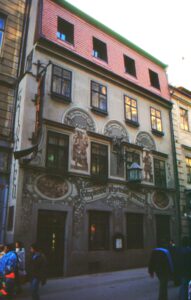





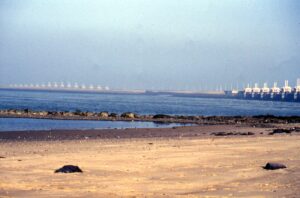
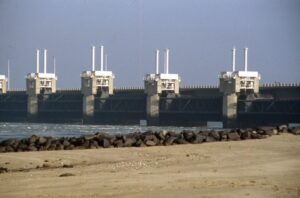







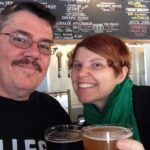





[…] Next: 40 Years in Beer, Part Thirty Nine: I’m off to Spijkenisse with a beer list in my hand (1992…. […]
[…] Previously: 40 Years in Beer, Part Thirty Nine: I’m off to Spijkenisse with a beer list in my hand (1992). […]
Comments are closed.